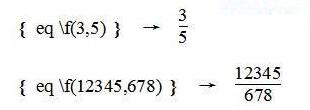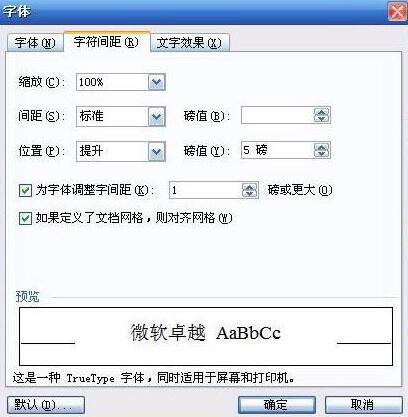How to use field help to enter mathematical formulas in word
When working with documents, entering mathematical formulas is a common problem. Word provides a convenient feature for embedding mathematical formulas - fields. This article aims to introduce how to use fields to enter mathematical formulas in Word and solve your troubles. Read on now to learn how to quickly and easily insert complex mathematical formulas to make your documents more professional.
1. Input of fractions
If you want to use domains to solve the problem, then the input of fractions is still very simple. For example, if we want to enter the number three-quarters, as long as we press the [Ctrl F9] shortcut key at the corresponding position, an empty space (a pair of curly brackets) will be generated. Position the mouse within the braces, then enter [eq f(3,4)], then right-click and click the [Switch Field Code] command in the pop-up menu to get the standard fraction of four Three, as shown in Figure 1. You can imitate other fractions and write them without worrying about the horizontal line in the fraction. It will automatically adjust the length according to the length of the numerator and denominator. It should be noted that the field code must be entered in English half-width state. In addition, the pair of braces cannot be entered manually and can only be completed using shortcut keys.

Figure 1 Word switches the field code to get the fraction effect
2. Fraction with root sign
First let’s talk about a simple cubic root Enter two numbers like this. Or press the [Ctrl F9] shortcut key first, then enter the field code [eq r(3, 2)] in the braces, select the number [3] in the code, reduce its font size, and then press the right-click menu By using the [Switch Domain Code] command, you can get the number three times the root of two, as shown in Figure 2.

Figure 2 Enter the special field code in Word
Obviously, if you want to get the quadratic root, then just change the number [3] in the code to [2 】That’s it. However, usually our habit is to ignore the number of the square root [2]. Therefore, we can also directly omit the first number in the field code and write the code directly [eq r(, 2) 】Just fine.
As for the fraction with a root sign, that’s simple. Just combine the codes for fractions and radicals and change them in the corresponding positions. Therefore, the field code for a number such as the third root of two-half, two, should be [eq f(r(3,2),2)]. After pressing [Switch Domain Code], is the effect obtained good? Just look at Figure 2 to find out.
3. Input vector symbols
The vector symbol is an arrow symbol added above the English letters. This requirement can also be easily achieved using domain functions.
Enter the field code [eq o(→,a)] in the curly brackets, where the arrow symbol can be implemented using the [insert → symbol] method. If we click the [Switch Field Code] command in the right-click menu at this time, you will find that the result is just arrows and letters overlapping, which is not the result we want. So, how do you make the arrow move upward?
Select the arrow in the field code, right-click, and then click the [Font] command in the pop-up menu to open the [Font] dialog box. Click the [Character Spacing] tab, then click the [Position] drop-down list, select [Boost], and use the subsequent [Point Size] fine-tuning button to set the lift value to [5 points], as shown in Figure 3.

Figure 3 Setting the character spacing in Word
After confirmation, the arrow symbol can be moved upward by 5 points, so that it can be moved above the characters. Now, select the field code and click the [Switch Field Code] command to get the expected effect, as shown in Figure 4.

Figure 4 The effect after adjusting the arrow characters
If you find this operation troublesome, you can also directly enter the code in the field symbol [eq o (sup5(→ ), a)], in this way, the effect of raising the arrow upward by 5 pounds can also be achieved. As shown in Figure 4 above.
The above is the detailed content of How to use field help to enter mathematical formulas in word. For more information, please follow other related articles on the PHP Chinese website!

Hot AI Tools

Undresser.AI Undress
AI-powered app for creating realistic nude photos

AI Clothes Remover
Online AI tool for removing clothes from photos.

Undress AI Tool
Undress images for free

Clothoff.io
AI clothes remover

Video Face Swap
Swap faces in any video effortlessly with our completely free AI face swap tool!

Hot Article

Hot Tools

Notepad++7.3.1
Easy-to-use and free code editor

SublimeText3 Chinese version
Chinese version, very easy to use

Zend Studio 13.0.1
Powerful PHP integrated development environment

Dreamweaver CS6
Visual web development tools

SublimeText3 Mac version
God-level code editing software (SublimeText3)

Hot Topics
 How to Create a Timeline Filter in Excel
Apr 03, 2025 am 03:51 AM
How to Create a Timeline Filter in Excel
Apr 03, 2025 am 03:51 AM
In Excel, using the timeline filter can display data by time period more efficiently, which is more convenient than using the filter button. The Timeline is a dynamic filtering option that allows you to quickly display data for a single date, month, quarter, or year. Step 1: Convert data to pivot table First, convert the original Excel data into a pivot table. Select any cell in the data table (formatted or not) and click PivotTable on the Insert tab of the ribbon. Related: How to Create Pivot Tables in Microsoft Excel Don't be intimidated by the pivot table! We will teach you basic skills that you can master in minutes. Related Articles In the dialog box, make sure the entire data range is selected (
 You Need to Know What the Hash Sign Does in Excel Formulas
Apr 08, 2025 am 12:55 AM
You Need to Know What the Hash Sign Does in Excel Formulas
Apr 08, 2025 am 12:55 AM
Excel Overflow Range Operator (#) enables formulas to be automatically adjusted to accommodate changes in overflow range size. This feature is only available for Microsoft 365 Excel for Windows or Mac. Common functions such as UNIQUE, COUNTIF, and SORTBY can be used in conjunction with overflow range operators to generate dynamic sortable lists. The pound sign (#) in the Excel formula is also called the overflow range operator, which instructs the program to consider all results in the overflow range. Therefore, even if the overflow range increases or decreases, the formula containing # will automatically reflect this change. How to list and sort unique values in Microsoft Excel
 If You Don't Rename Tables in Excel, Today's the Day to Start
Apr 15, 2025 am 12:58 AM
If You Don't Rename Tables in Excel, Today's the Day to Start
Apr 15, 2025 am 12:58 AM
Quick link Why should tables be named in Excel How to name a table in Excel Excel table naming rules and techniques By default, tables in Excel are named Table1, Table2, Table3, and so on. However, you don't have to stick to these tags. In fact, it would be better if you don't! In this quick guide, I will explain why you should always rename tables in Excel and show you how to do this. Why should tables be named in Excel While it may take some time to develop the habit of naming tables in Excel (if you don't usually do this), the following reasons illustrate today
 Use the PERCENTOF Function to Simplify Percentage Calculations in Excel
Mar 27, 2025 am 03:03 AM
Use the PERCENTOF Function to Simplify Percentage Calculations in Excel
Mar 27, 2025 am 03:03 AM
Excel's PERCENTOF function: Easily calculate the proportion of data subsets Excel's PERCENTOF function can quickly calculate the proportion of data subsets in the entire data set, avoiding the hassle of creating complex formulas. PERCENTOF function syntax The PERCENTOF function has two parameters: =PERCENTOF(a,b) in: a (required) is a subset of data that forms part of the entire data set; b (required) is the entire dataset. In other words, the PERCENTOF function calculates the percentage of the subset a to the total dataset b. Calculate the proportion of individual values using PERCENTOF The easiest way to use the PERCENTOF function is to calculate the single
 How to Format a Spilled Array in Excel
Apr 10, 2025 pm 12:01 PM
How to Format a Spilled Array in Excel
Apr 10, 2025 pm 12:01 PM
Use formula conditional formatting to handle overflow arrays in Excel Direct formatting of overflow arrays in Excel can cause problems, especially when the data shape or size changes. Formula-based conditional formatting rules allow automatic formatting to be adjusted when data parameters change. Adding a dollar sign ($) before a column reference applies a rule to all rows in the data. In Excel, you can apply direct formatting to the values or background of a cell to make the spreadsheet easier to read. However, when an Excel formula returns a set of values (called overflow arrays), applying direct formatting will cause problems if the size or shape of the data changes. Suppose you have this spreadsheet with overflow results from the PIVOTBY formula,
 Excel MATCH function with formula examples
Apr 15, 2025 am 11:21 AM
Excel MATCH function with formula examples
Apr 15, 2025 am 11:21 AM
This tutorial explains how to use MATCH function in Excel with formula examples. It also shows how to improve your lookup formulas by a making dynamic formula with VLOOKUP and MATCH. In Microsoft Excel, there are many different lookup/ref
 How to Use Excel's AGGREGATE Function to Refine Calculations
Apr 12, 2025 am 12:54 AM
How to Use Excel's AGGREGATE Function to Refine Calculations
Apr 12, 2025 am 12:54 AM
Quick Links The AGGREGATE Syntax







